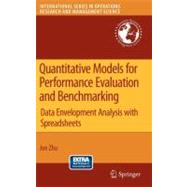
| Preface | p. xi |
| Envelopment DEA Models | |
| Performance Evaluation, Tradeoffs, and DEA | p. 1 |
| Envelopment Model | p. 5 |
| Envelopment Models in Spreadsheets | p. 14 |
| Solving DEA Using DEAFrontier Software | p. 35 |
| References | p. 41 |
| Multiplier and Slack-based Models | |
| Multiplier Model with Weight Restrictions | p. 43 |
| Multiplier Models in Spreadsheets | p. 45 |
| Slack-based Model | p. 51 |
| Slack-based Models in Spreadsheets | p. 53 |
| Solving DEA Using DEAFrontier Software | p. 57 |
| References | p. 61 |
| Measure-specific DEA Models | |
| Measure-specific Models | p. 63 |
| Measure-specific Models in Spreadsheets | p. 64 |
| Performance Evaluation of Fortune 500 Companies | p. 66 |
| Solving DEA Using DEAFrontier Software | p. 75 |
| References | p. 76 |
| Non-radial DEA Models and DEA with Preference | |
| Non-radial DEA Models | p. 77 |
| DEA with Preference Structure and Cost/Revenue Efficiency | p. 79 |
| DEA/Preference Structure Models in Spreadsheets | p. 83 |
| DEA and Multiple Objective Linear Programming | p. 85 |
| Solving DEA Using DEAFrontier Software | p. 90 |
| References | p. 95 |
| Modeling Undesirable Measures | |
| Introduction | p. 97 |
| Efficiency Invariance | p. 98 |
| Undesirable Outputs | p. 99 |
| Undesirable Inputs | p. 103 |
| Solving DEA Using DEAFrontier Software | p. 104 |
| Negative Data | p. 105 |
| References | p. 107 |
| Context-dependent Data Envelopment Analysis | |
| Introduction | p. 109 |
| Stratification DEA Method | p. 111 |
| Input-oriented Context-dependent DEA | p. 115 |
| Output-oriented Context-dependent DEA | p. 123 |
| Solving DEA Using DEAFrontier Software | p. 127 |
| References | p. 129 |
| Benchmarking Models | |
| Introduction | p. 131 |
| Variable-benchmark Model | p. 132 |
| Fixed-benchmark Model | p. 143 |
| Fixed-benchmark Model and Efficiency Ratio | p. 146 |
| Minimum Efficiency Model | p. 150 |
| Buyer-seller Efficiency Model | p. 153 |
| Solving DEA Using DEAFrontier Software | p. 158 |
| References | p. 160 |
| Models for Evaluating Supply Chains | |
| Supply Chain Efficiency | p. 161 |
| Supply Chain Efficiency | p. 163 |
| Cooperative and Non-Cooperative Approaches | p. 174 |
| References | p. 186 |
| Congestion | |
| Congestion Measure | p. 187 |
| Congestion and Slacks | p. 193 |
| Slack-based Congestion Measure | p. 195 |
| Solving DEA Using DEAFrontier Software | p. 201 |
| References | p. 203 |
| Super Efficiency | |
| Super-efficiency DEA Models | p. 205 |
| Infeasibility of Super-efficiency DEA Models | p. 209 |
| Solving DEA Using DEAFrontier Software | p. 223 |
| References | p. 225 |
| Sensitivity Analysis | |
| DEA Sensitivity Analysis | p. 227 |
| Stability Region | p. 230 |
| Infeasibility and Stability | p. 242 |
| Simultaneous Data Change | p. 246 |
| Solving DEA Using DEAFrontier Software | p. 264 |
| References | p. 266 |
| Identifying Critical Measures in DEA | |
| Introduction | p. 269 |
| Performance Evaluation and DEA | p. 269 |
| Identifying Critical Output Measures | p. 274 |
| Identifying Critical Input Measures | p. 275 |
| Numerical Example and Extension | p. 277 |
| Application to Fortune E-Companies | p. 278 |
| References | p. 287 |
| Returns-to-Scale | |
| Introduction | p. 289 |
| RTS Regions | p. 290 |
| RTS Estimation | p. 291 |
| Scale Efficient Targets | p. 299 |
| Solving DEA Using DEAFrontier Software | p. 301 |
| References | p. 303 |
| DEA Models for Two-Stage Processes | |
| Introduction | p. 305 |
| VRS Two-Stage Model | p. 306 |
| CRS Two-Stage Model | p. 312 |
| Solving DEA Using DEAFrontier Software | p. 317 |
| References | p. 318 |
| Author Index | p. 319 |
| Topic Index | p. 323 |
| Table of Contents provided by Ingram. All Rights Reserved. |
The New copy of this book will include any supplemental materials advertised. Please check the title of the book to determine if it should include any access cards, study guides, lab manuals, CDs, etc.
The Used, Rental and eBook copies of this book are not guaranteed to include any supplemental materials. Typically, only the book itself is included. This is true even if the title states it includes any access cards, study guides, lab manuals, CDs, etc.